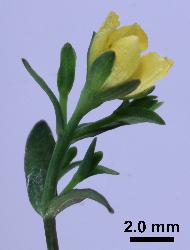Shrubs or annual to perennial herbs. Cork pericyclic; polyderm widespread. Flowers 4–5-merous, calyx often contorted. Stamens 5–many, often fasciculate, centrifugal; anthers often with simple glands. Stigma not papillate, dry. Fruit a capsule, berry or drupe. Seeds 5–many, exotegmen absent; embryo green or white, cotyledons moderate-sized. Flavones, flavonols and biflavonoids present.
Nine genera and c. 560 species of temperate and subtropical regions.
| Category | Number |
|---|---|
| Indigenous (Endemic) | 2 |
| Indigenous (Non-endemic) | 2 |
| Exotic: Fully Naturalised | 12 |
| Exotic: Casual | 2 |
| Origin uncertain: Present in wild | 1 |
| Total | 19 |
n = 6–12. (see Robson (1990) for discussion).
A phylogenetic study of the Malpighiales has been made by Wurdack & Davis (2009). The family Hypericaceae is shown to be monophyletic and sister to Podostemaceae, whereas the family Clusiaceae is paraphyletic and comprises two unrelated subfamilies (Kielmeyeroideae and Clusioideae). The subfamily Clusioideae is treated as the family Clusiaceae, and the subfamily Kielmeyeroideae is circumscribed as the reinstated family Calophyllaceae (Wurdack & Davis 2009). Previously, some authors had placed Hypericum in Clusiaceae sensu lato.




